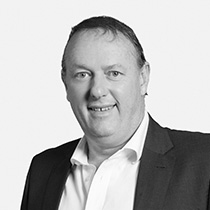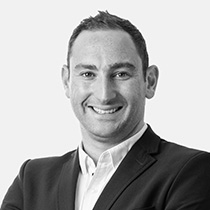The Fund rose 5.8% in the fourth quarter of 2021 (Q4-21). It was encouraging to see a quarter of strong absolute returns, but the 12-month return of 2.9% was disappointing against a backdrop of buoyant markets. However, we do believe that the collection of assets held by the Fund can deliver compelling long-term risk-adjusted returns to achieve its goal of compounding capital well ahead of inflation. Over the past five years, the Fund has generated a positive return of 12.3% p.a., 15.3% p.a. over 10 years and 14% p.a. since its inception over 20 years ago.
Even though 2021 was a year during which the headline performance of markets was strong, it doesn’t tell the full story, as a small number of large stocks drove overall market returns. This is best illustrated by the performance of the Nasdaq, which delivered a very strong total return of 27.5% in 2021, but 40% of all companies in the Index are trading at 50%, or more, below their 52-week highs. In fact, the Nasdaq’s returns have been driven largely by five large-cap technology stocks (Apple, Alphabet, Microsoft, Nvidia and Tesla). There has thus been a material market correction in certain pockets of the market, which is being overshadowed primarily by the strong performance of large technology companies.
This market correction has played out mainly in stocks of the companies that are loss-making, had high starting valuations and are characterised as long-duration businesses owing to their terminal value making up the bulk of the business value, as opposed to current free cash flow and earnings. We retain a cautious approach to these types of businesses. But at the same time, we are looking for opportunities to emerge in this category due to what can be described as synchronised and indiscriminate selling of all assets that fall into this category.
We continue to focus significant time on China, with the Fund having approximately 15.5% exposure to Chinese assets. We continue to feel these assets are very attractively priced, but acknowledge the risks, with consistent work being done to keep abreast of the regulatory environment and its long-term impact on the companies owned by the Fund. Prosus (indirect exposure to Tencent) and JD.com continue to make up more than 50% of the Fund’s Chinese exposure and 9% of the portfolio in total.
During the quarter, the largest positive contributors were Capri Holdings (+42%, 0.82% positive impact), AngloGold Ashanti (+39%, 0.67% positive impact), Prosus (+11%, 0.60% positive impact) and Centene (+41%, 0.5% positive impact). The largest negative contributors were Auto1 Group (-36%, 0.34% negative impact), Trip.com (-15%, 0.24% negative impact) and PagSeguro (-48%, 0.21% negative impact).
Auto1 has declined nearly 70% since its IPO in February 2021. The business is involved in the buying and selling of cars by using the internet and technology to reduce friction in the consumer experience. Notwithstanding the disappointing stock performance, the business has continued to deliver operationally with its legacy dealer business (C2B) continuing to grow (revenue up 49% in the past year) and its retail (C2B2C) segment powering ahead (units sold up 4.7 times and revenue up 412%). This good operational performance has been overshadowed by competition concerns. However, it should be noted that the industry remains highly fragmented, with Auto1 representing only c.1% of the market, with the shift to online car buying still in its infancy. This is a long-duration asset, but one that is solving a real problem and dramatically improving the consumer experience, and which we think is attractively valued, with significant potential upside at current levels.
Trip.com is the largest online travel agency in China but still only has a 14% share of the travel market, which continues to shift from offline to online booking channels. Its business has been negatively impacted by the outbound travel market (c.30% of group revenue in 2019), effectively being shuttered for nearly two years, along with haphazard lockdowns in China impacting domestic travel. Trip.com has tried to navigate these challenges by investing more in its domestic offerings, which has resulted in them gaining market share as many travel peers have struggled in a tough operating environment. While Chinese outbound travel re-opening is highly uncertain, it should be noted that roughly two-thirds of pre-Covid-19 outbound travel was to Hong Kong and Macau, which could normalise in the not-too-distant future, even if other outbound travel takes much longer to do so. Trip.com has also done a good job in optimising its cost structure and thus should achieve structurally higher margins once revenue recovers to 2019 levels.
PagSeguro is a business in Brazil that initially started out as a disruptive merchant acquirer with a focus on smaller businesses that it enabled to accept non-cash payments. It has since added additional financial service offerings by leveraging the merchant-acquiring relationship. The business now has a banking licence and is taking deposits, which should create stickier customer relationships, with the deposit base reducing the company’s funding costs. The share has recently come under pressure due to general macro concerns in Brazil, along with rising interest rates, which negatively impact the income PagSeguro earns in certain parts of its business. Notwithstanding these headwinds, the business continues to execute well, with operational results being encouraging, and with the company still going after a very large financial services profit pool that is ripe for disruption. The share is down nearly 60% from its peak, yet the fundamentals of the business are largely unchanged, making PagSeguro a very attractive investment, in our view.
The Fund ended the quarter with 78.5% net equity exposure, slightly higher than the exposure on 30 September 2021, as we bought attractive stocks selectively.
Our negative view on global bonds remained unchanged as a large portion of developed market sovereign bonds offers negative yields to maturity. The follow-on effect is that most corporate bonds also offer yields that do not compensate for the risk undertaken, and which are increasing due to inflation and rising interest rates. However, we continued to buy South African (SA) government bonds in the quarter, which now represent 4.83% of the Fund. Our view on the SA fiscal situation has improved somewhat, which, coupled with the fact that we are receiving a c.10% yield on these bonds, is attractive in our view. Furthermore, considering that inflation within SA remains controlled, the real yields on SA government bonds are the highest in the world.
The Fund continues to have a physical gold position of 3.26%, a 2.57% holding in AngloGold Ashanti, and a 0.60% holding in Gold Fields. The gold price finished the year down approximately 3.5% in US dollars, but we continue to hold the position for its diversifying properties in what we characterise as a low-visibility world, with increasingly visible inflation risks. AngloGold Ashanti rebounded somewhat in the quarter, as detailed above (+39%), but remains attractive due to the likelihood of operational improvements under the newly appointed CEO, which should lead to improved business performance, with the business trading on an eight times price earnings multiple. The balance of the Fund is invested in cash, largely offshore.
As the outlook for the future remains uncertain and hard to predict, we take comfort in the fact that the Fund holds a collection of businesses that we feel are attractively priced and can operate in what we deem to be a highly complex and fast-changing environment. Also, because the Fund is a multi-asset flexible fund, we have access to additional tools with which to take advantage of dislocations in the market, along with risk control measures such as put options. Current Index put-option exposure is 6.3% effective and 27.6% nominal as a percentage of the Fund, which will shield the Fund somewhat in the event of a significant drawdown in equity indices.
Notable buys/increases in position sizes during the quarter were ASML and Centene.
ASML is a semiconductor equipment supplier, making lithography machines that are critical to the production of computer chips. It is arguably the most important company for technological innovation, as its machines are a key enabler in driving continued semiconductor innovation. The company has created a monopoly market position in EUV machines, which are needed to produce leading-edge computer chips. This provides the business with significant pricing power, with an EUV machine selling for approximately €130 million each, with future iterations continuing to increase in price due to the value they provide. The business is supported by a structural growth trend as the demand for semiconductors remains extremely robust as technology proliferates every aspect of human life. Another unique aspect of ASML’s business is revenue visibility due to the business being intertwined with its customers and thus having site of the latter’s capacity roadmaps. This is reflected in the fact that, at ASML’s most recent investor day, the company gave scenario guidance to 2030. ASML‘s near-term earnings multiples are high, but it should continue to grow revenue and earnings at double-digit rates into 2030 while generating a return on capital of more than 20%, driving a fairly rapid unwinding of the high near-term multiple.
Centene is one of the top five US healthcare insurers (managed care), with a focus on Medicaid in particular (government-sponsored healthcare specifically for lower-income individuals) where it is the no. 1 player. This business continues to grow structurally as Medicaid spend shifts from fee-for-service (payments directly to service providers) to managed care (payments to companies like Centene). Historically, Centene’s operational performance has been below par, making them a possible target for a takeout and has also resulted in an activist shareholder becoming involved. This involvement has already resulted in a recent announcement of five new directors to the board. Centene has laid out what it calls a ‘value creation plan’, which details how the business will take EPS from around $5.10 in 2021 to around $7.65 in 2024 due to a range of factors, including platform centralisation, operational efficiencies, margin improvement in certain products, share buybacks and debt paydown. If achieved, this will mean earnings growth over the next three years of 14.4% p.a. Centene trades on 14 times this year’s (2022) earnings, which makes it very attractive in our view, given its prospects.
The Omicron variant resulted in renewed worries surrounding Covid-19 and its disruptive effect, but initial data seems to indicate that it is milder but spreads quicker. There remains risk to this view as additional studies are carried out across the world, and thus increasing vaccine coverage remains the best tool to fight Covid-19, especially in lower-income countries that have materially lower vaccination rates, creating a continued risk that further variants develop as the virus continues to spread within communities. Against this uncertain backdrop, we remain positive on the outlook for the Fund, which has been built bottom up, with a collection of attractively priced assets to provide diversification in order to achieve the best risk-adjusted returns going forward in a variety of future scenarios.
Please note that this is for the retail version of the fund. View the Global Optimum Growth [ZAR] Feeder Fund page
 South Africa - Personal
South Africa - Personal



